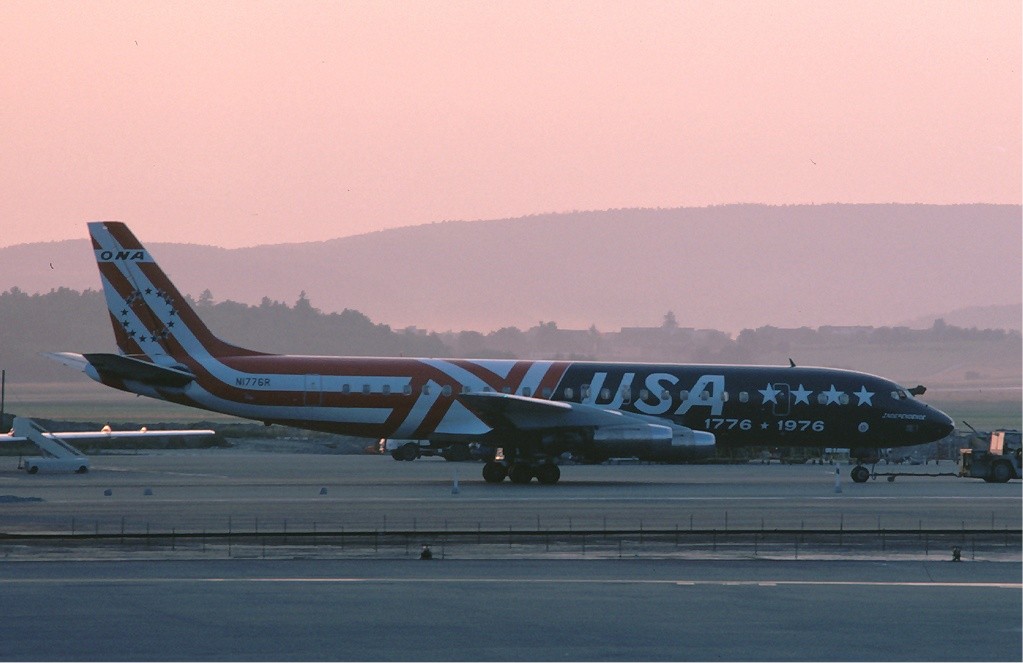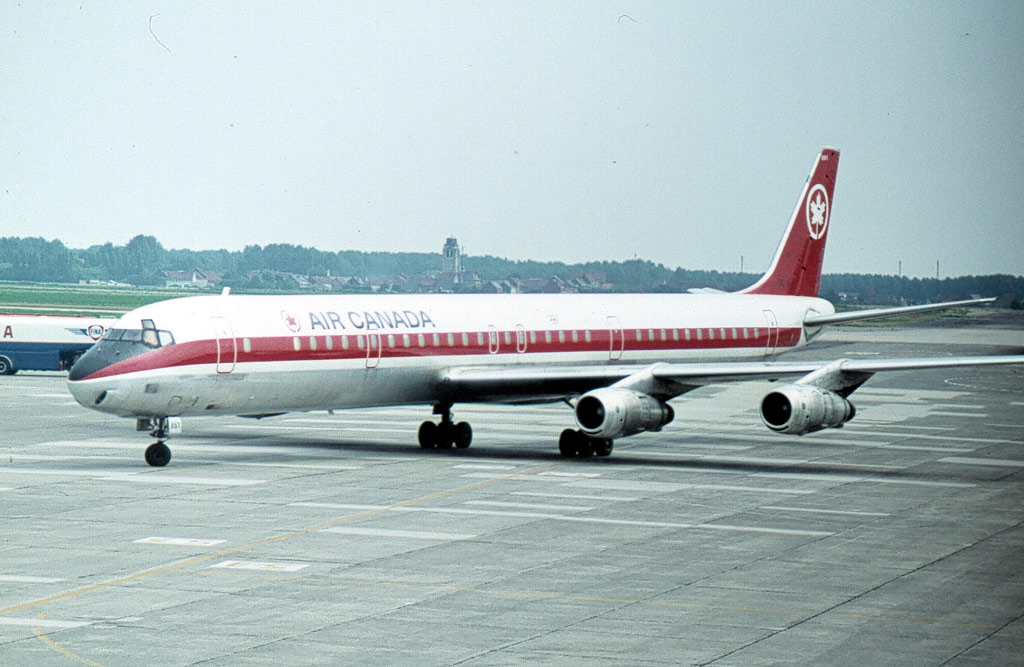The McDonnell Douglas DC-9 (initially known as the Douglas DC-9) is a twin-engine, single-aisle jet airliner. It was first manufactured in 1965 with its maiden flight later that year. The DC-9 was designed for frequent, short flights. The final DC-9 was delivered in October 1982.
The DC-9 was followed in subsequent modified forms by the MD-80, MD-90 and Boeing 717. With the final two deliveries of the 717 in 2006, production of the DC-9/MD-80/90/717 aircraft family ceased after 41 years and nearly 2,500 units built.
Series 10: The original DC-9 (later designated the Series 10) and was the smallest DC-9 series. The Series 10 was similar in size and configuration to the BAC One-Eleven and featured a T-tail and rear mounted engines. A total of 137 were built.
Series 20: This was designed to satisfy a Scandinavian Airlines request for improved short field performance by using the more powerful engines and improved wings of the Series 30 combined with the shorter fuselage used in the -10. Ten Series 20 aircraft were produced.
Series 30: The -30 was the definitive series, produced to counter Boeing's 737 twinjet, with 662 produced, accounting for about 60% of production. The Series 30 entered service with Eastern Airlines in February 1967.
Series 40: This further lengthened version entered service with SAS in March 1968. With a 6 ft 6 in (2 m) longer fuselage, accommodation was up to 125 passengers. A total of 71 were produced.
Series 50: The -50 was the largest DC-9 to fly. It features a 2.49 m fuselage stretch and seats up to 139 passengers. It started revenue service in August 1975 with Eastern Airlines and included a number of detail improvements, a new cabin interior, and more powerful engines. McDonnell Douglas delivered 96, all as Model DC-9-51.
The real specifications for this vehicle are (taken from
Wikipedia):
| Series | Douglas DC-9-10 | Douglas DC-9-30 | Douglas DC-9-50 |
|---|
Length | 31.82 m | 36.37 m | 40.72 m |
| Wingspan | 27.25 m | 28.47 m |
|---|
| Power | 2 x 62.3 kN | 2 x 68.9 kN | 2 x 71.2 kN |
|---|
| Cruise speed | 903 Km/h | 917 Km/h | 898 Km/h |
|---|
| Capacity (typical) | 90 | 115 | 135 |
|---|
Here are some pictures of this aircraft.
 A New York Air DC-9-32, 1983
A New York Air DC-9-32, 1983 Two British Midland DC-9s at Teesside Airport in 1994.
Two British Midland DC-9s at Teesside Airport in 1994. DC-9-10 Delta / DC-9-30 Aserca / DC-9-50 Delta
DC-9-10 Delta / DC-9-30 Aserca / DC-9-50 Delta Simutrans object data:
| Type | Airplane |
|---|
| Name | Douglas DC-9-10 | Douglas DC-9-30 | Douglas DC-9-50 |
|---|
| Freight | Passengers |
|---|
| Capacity | 90 | 115 | 135 |
|---|
| Power | 4120 kW | 4540 kW | 4690 kW |
|---|
| Max.Speed | 903 Km/h | 917 Km/h | 898 Km/h |
|---|
| Intro Year | 1965 | 1967 | 1975 |
|---|
| Retire Year | 1982 | 1984 | 1992 |
|---|
You can download the addons in the original liveries at
The Simutrans Boxroom.
For more information on this airplane check the following links:

















































